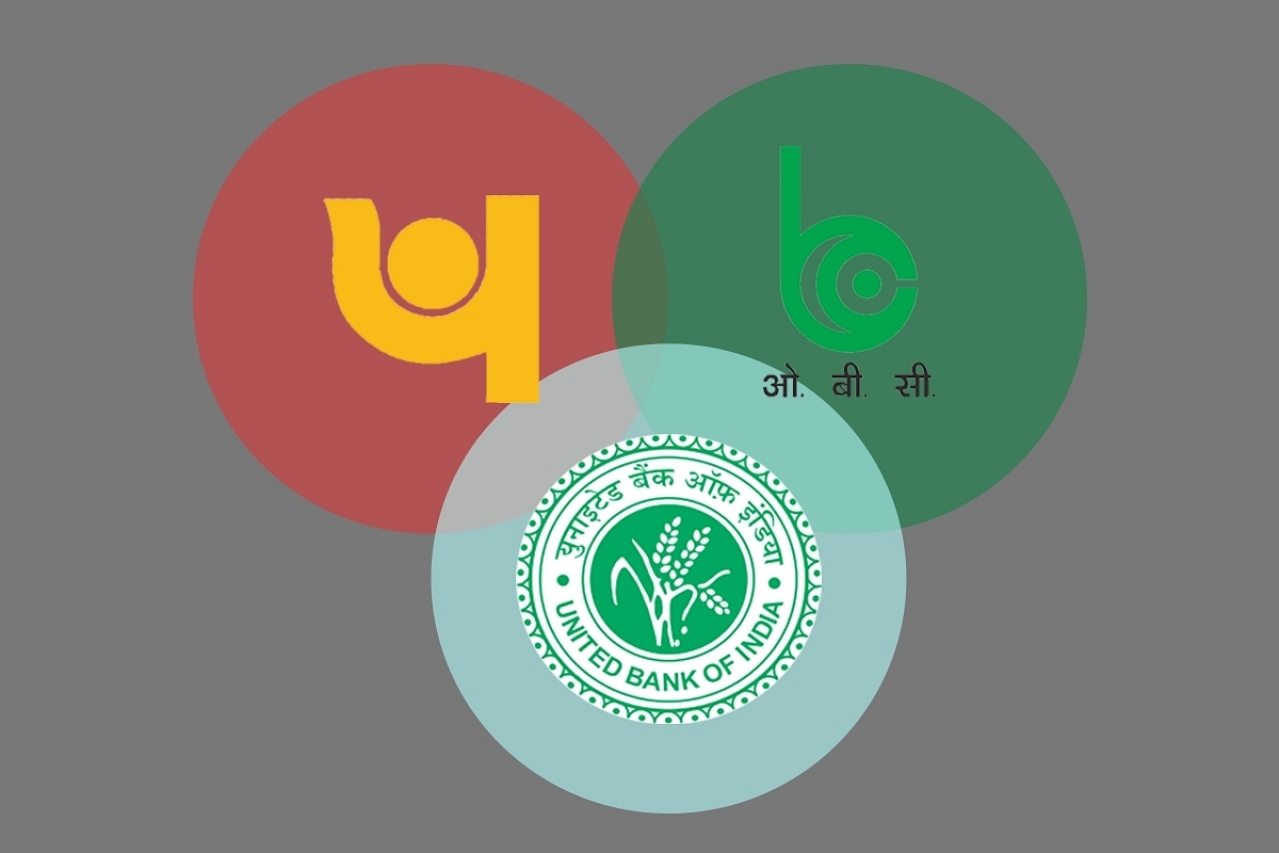Economy
Data Story: Why Constant Monitoring At Branch Level Is Key To Success Of Bank Mergers
- Few of the bank-merger discussions have focused on the regional spread of these public sector banks, the market share they could address and the competitive power the merged entity could unleash in different regions.
- Private banks are expanding more efficiently than the public sector banks. Therefore, nimble governance with constant monitoring at the branch level would determine the success of the merger process.

Logos of PNB, OBC and UBI - three banks merged by the government. (Swarajya)
The recent announcement by the Finance Ministry of the mergers of public sector banks (PSBs) into four entities has ignited the debate again on various aspects of banking.
While many questions are being posed — such as the manageability of non-performing assets (NPAs) post the merger, capital infusion and, inevitably, the human resources factor — few of these discussions have focused on the regional spread of these banks, the market share they could address and the competitive power the merged entity could unleash in different regions.
We used GeoCreDe.com, which enables access to granular data and allows analysis to better understand these issues.
Note: We have excluded Mumbai from our analysis. Mumbai, being the financial capital, skews the data towards the Western region.
Growing Markets
The Indian banking sector has witnessed reasonable growth over the last few years, notwithstanding the suggestions of a slowdown. Excluding Mumbai, deposits have registered a compounded annual growth rate (CAGR) of nearly 14 per cent between 2013-14 and 2018-19 (from Rs 64.5 lakh crores to Rs 108.5 lakh crores).
Similarly, credit offtake has registered a CAGR of 12.5 per cent during the same period (from Rs 47.6 lakh crores to Rs 76.4 lakh crores). The regional spread of this growth has been evenly distributed, except in the cases of credit expansion in the Eastern and the North-Eastern regions (see Table 1).
The pertinent question to ask is: Which bank groups have taken a major pie of this growing market for deposits and credit?
Tables 2.1 and 2.2 show that the private sector banks have been most successful in responding to growing opportunities. In terms of deposits, the share of private banks increased from 17 per cent to 26 per cent in the same period (See Table 2.1).
The overall share of private sector banks in credit increased from 17 per cent in 2013-14 to 31 per cent in 2018-19 (See Table 2.2).
What is even more noteworthy is that private banks have increased their share in growing markets. In contrast, the share of public sector banks has fallen in almost all categories.
In this context, what could be — or more relevantly — should be, the objective of the mergers?
The primary objective is to garner a larger share of the market. For this, branch network is a key parameter. Presence in key locations requires an understanding of the local economic activities and a codified knowledge of local markets, its risk profile and behavioural aspects.
Table 3.1 shows the growth in number of branches across different regions, and indicates that the growth of bank branches has been fairly uniform.
Table 3.2 shows the change in market share of different categories of banks in terms of branch network. As can be seen, private sector banks have registered higher growth in all regions and have garnered market share from the PSBs.
An analysis of per-branch banking statistics also shows that the private banks are on a better wicket. This suggests that private banks are expanding more efficiently than the public sector banks.
A significant change in governance model is the need of the hour to sustain public sector banking in India to augment the process once the mergers are completed.
With the growth of small-size accounts in recent times, it is imperative for banks to understand local economic cycles and strengths. It is pertinent here to note that post-merger, the new entities would have a reasonably good market share in terms of number of branches to start with (see Table 4).
Nimble governance with constant monitoring at the branch level would determine the success of the merger process.
Akara Research & Technologies Pvt Ltd is based out of Tamil Nadu and builds products and solutions that drive informed decision-making and enable smart governance.
Introducing ElectionsHQ + 50 Ground Reports Project
The 2024 elections might seem easy to guess, but there are some important questions that shouldn't be missed.
Do freebies still sway voters? Do people prioritise infrastructure when voting? How will Punjab vote?
The answers to these questions provide great insights into where we, as a country, are headed in the years to come.
Swarajya is starting a project with an aim to do 50 solid ground stories and a smart commentary service on WhatsApp, a one-of-a-kind. We'd love your support during this election season.
Click below to contribute.
Latest